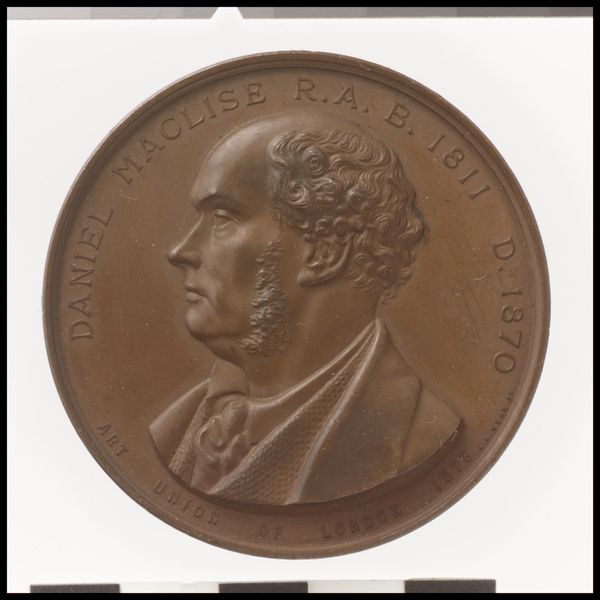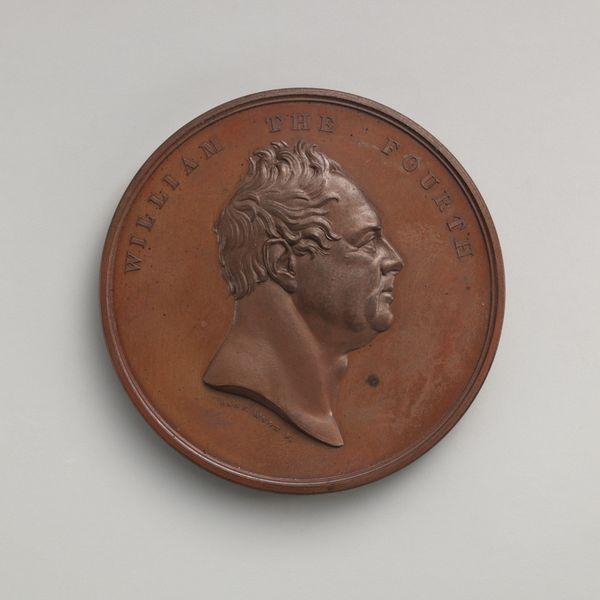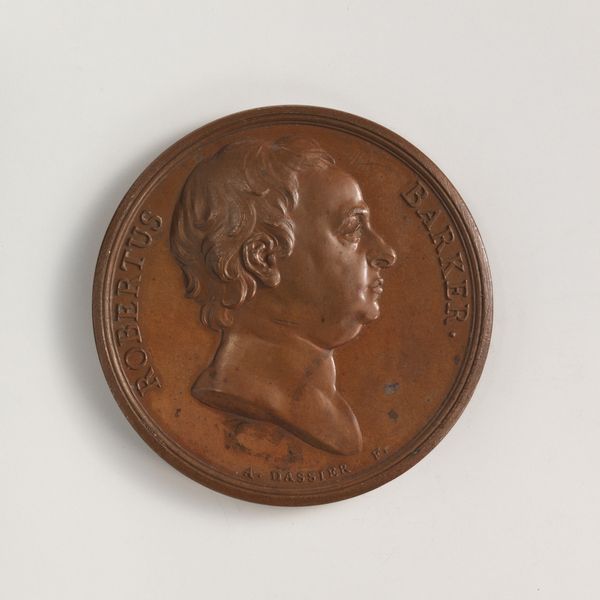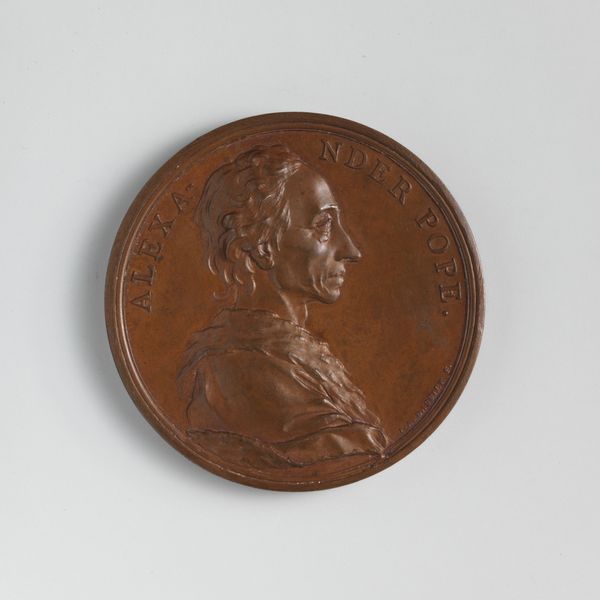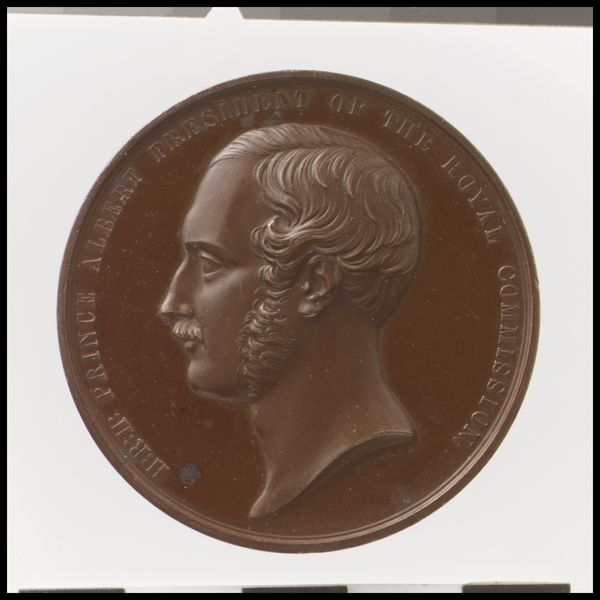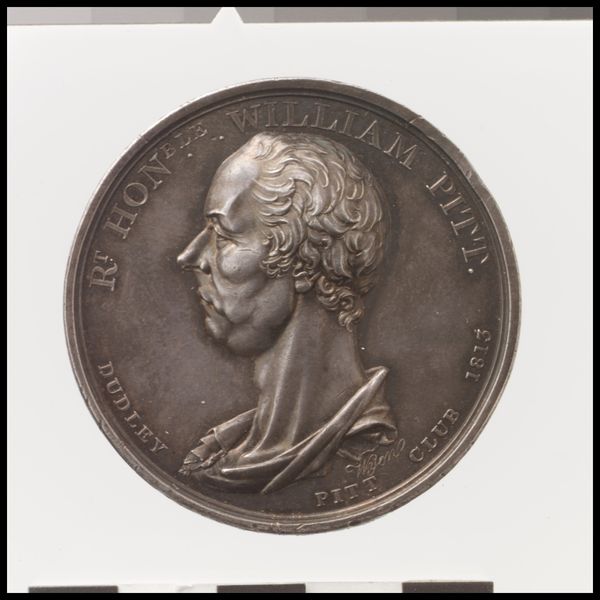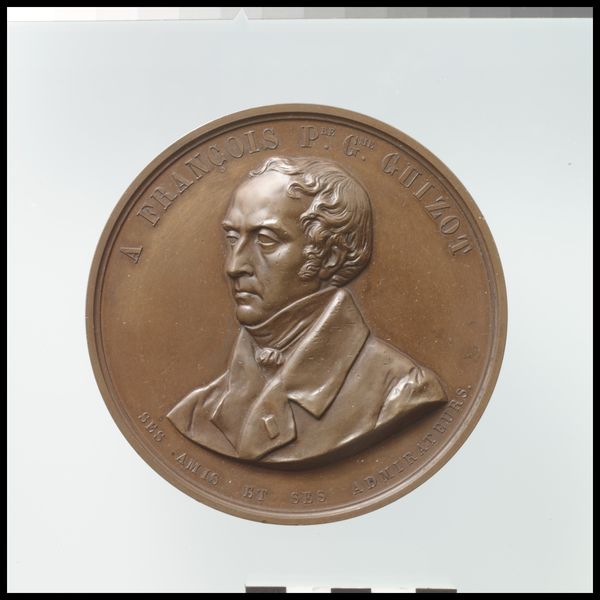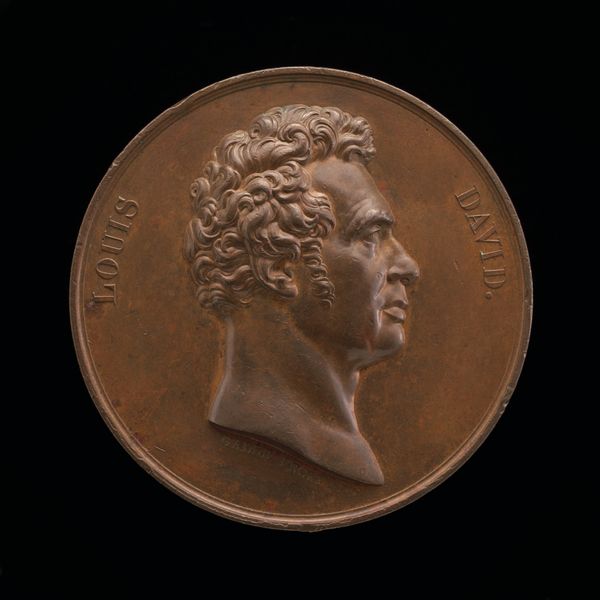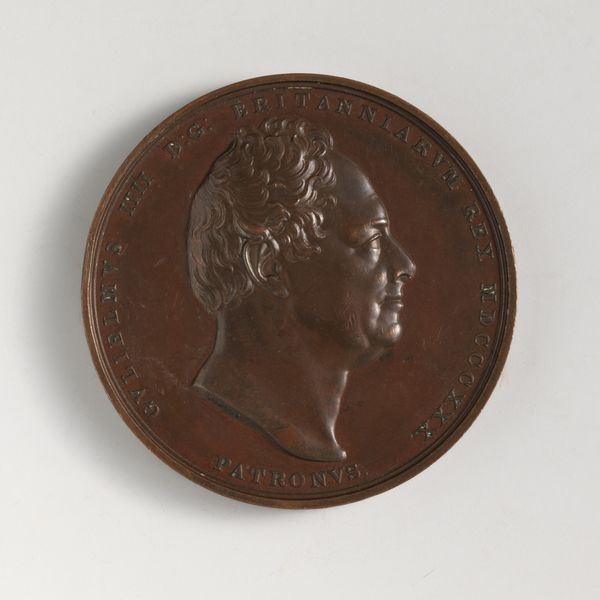
carving, print, bronze, sculpture
#
portrait
#
medal
#
carving
#
neoclassicism
# print
#
sculpture
#
classical-realism
#
bronze
#
sculpture
#
carved
#
history-painting
#
academic-art
#
decorative-art
#
profile
Dimensions: Diameter: 8 1/8 in. (206 mm)
Copyright: Public Domain
Curator: This bronze medal, “William IV with reverse of London Bridge,” was created by Benjamin Wyon in 1831 and is now housed at the Metropolitan Museum of Art. Editor: I'm immediately struck by the somber quality despite the celebratory context, the muted bronze seems to drain the scene of vivacity. Curator: Well, these medals served as tools to propagate power. Royal portraits were deliberately fashioned to align with prevailing ideals, legitimizing and glorifying monarchic rule. It's also worth thinking about Wyon's background. His family’s roots were connected to German-Jewish immigrants to London who rose in prominence via die-making—a history steeped in migration and assimilation within British society. Editor: It is interesting how Wyon has carefully considered every line and contour, giving this artwork a certain gravity. It appears to embody neoclassicism, and with his meticulous rendering, every feature—hair, the line of the nose, the hint of jowl—conveys the essence of authority. Curator: This piece was created to commemorate the new London Bridge designed by John Rennie, and we see it depicted on the medal’s reverse side. Consider that London Bridge wasn’t just infrastructure; it symbolized London's prominence as a trade and commercial center and, by extension, the empire’s economic and military might. This piece promotes a specific national narrative that emphasizes progress, innovation, and stability under monarchical rule. Editor: Yes, while ostensibly commemorating progress, it subtly adheres to an almost timeless compositional balance. I find it difficult to disassociate this kind of visual rhetoric from power. Curator: Indeed. Reflecting on this piece reveals how visual artifacts functioned as propaganda, deeply intertwined with social, economic, and political power structures of the time. Editor: On the other hand, scrutinizing Wyon’s calculated style yields clues about artistic intent and cultural conventions—a balance of authority with aesthetic discipline.
Comments
No comments
Be the first to comment and join the conversation on the ultimate creative platform.

